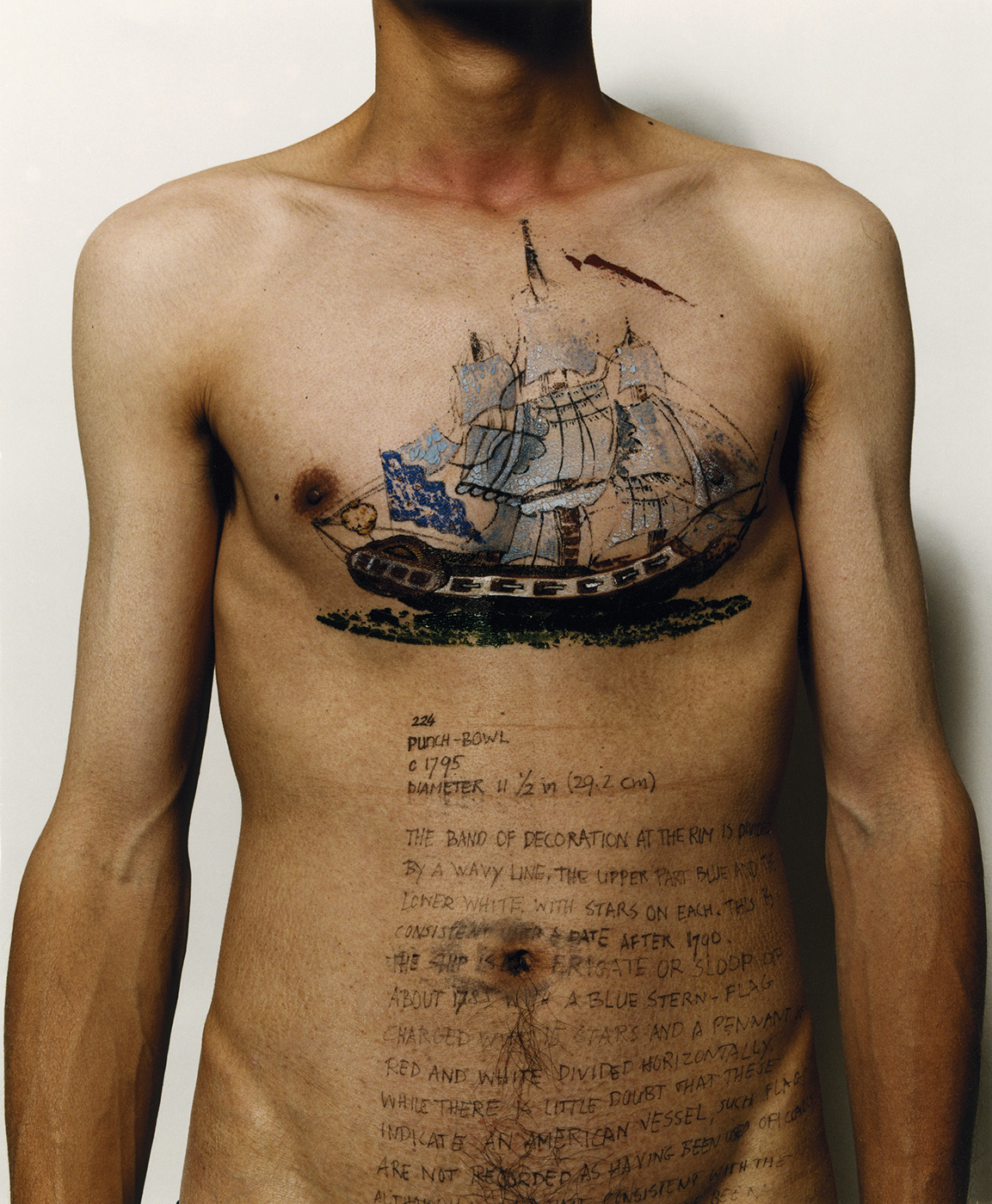Ni

Haifeng Ni
Self-Portrait as Part of the Porcelain Export History 6 - Front with boats, 1999-2001
c print
70 x 60 cm
Edition de 10 ex + 1 AP
Courtesy de l'artiste & Galerie In Situ - fabienne leclerc, Grand Paris
Ni Haifeng
Self-Portrait as a Part of the Porcelain Export History (1999-2001)
[...]
Is that also true for another work of yours, Self-Portrait as a Part of the Porcelain Export History ?
That work shows photographs of your body tattooed with motifs from Dutch colonial chinaware.
That work is a piece of ?body writing? based on a similar principle: by adding to the body it makes the already existing invisible inscriptions apparent. It depicts my own body covered with porcelain patterns and texts
related to the history of porcelain. It portrays myself as part of the production of that specific history.
The texts and the patterns on my body have all been taken from a reference book on porcelain collections. There are two sources to the patterns: on the one hand the indigenous traditional Chinese porcelain dsign, and on the other the porcelain patterns of the Chine de Commande designed in the West during the seventeenth and eighteenth century, but manufactured in China. So you have a history that comprises two texts, a history of both the politics and the economics of export and import which reappears on the body of a contemporary individual. As though we still live in the present moment of a past, and the past always comes
to haunt the present.
The concept of that work is very much related to Foucault?s idea of ?the docile body?, the body as something that can be subjugated, used, transformed, improved. ?The docile body? is rephrased in a special context in this work. The body with specific historical writings, the transformed body, the obscured and improved body as a visible thing or sign. I also wanted the title to refer to current notions of globalisation.
Everyone is always talking about this as if it?s the ultimate emancipation. But in fact it just perpetuates the
old structures. The same is true for today?s global cultural space: just like in the old days today?s Chinese
artists are producing their works as raw material for export to the West, to be received and judged by the dominant anthropological and art historical gaze.
When I first saw that work, I somehow assumed that those tattoos were real, because I saw them as related to
the pain of colonisation. I associated them with a novel by Kafka, in which thousands of needles inscribe an invisible but detailed text into the subjected body.
The inscriptions I used are not actual tattoos, but paint that can be washed off and put on again and again. They show the body as a palimpsest. They?re not there to expose the pain caused by colonisation, but to
reclaim the lost body in order to name it again, in order to redefine who you are. I always think of history as a kind of writing. It is constantly being erased and rewritten. In this piece I rewrote history through my own body. It echoes the stereotypical images of ?The Chinese?. It is a kind of parody, a self mockery.
[...]
Excerpts from an interview ?A Zero Degree Writing and Other Subversive Moments?, by Marianne Brouwer